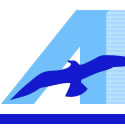

 |
 |
 |
 |
 |
 |
 |
 |
 |
 |
 |
 |
||
|
|
|
|
| The
incidence and localization of fractures differs in accordance with
the age. Bone during childhood is more elastic than that of adult,
so more vulnerable to external force. Bone fracture heals faster during
childhood, and certain amount of bone deformity will re-align with
time. Bone of adult is rigid, so it will fail(fracture) only when
heavy external force applies such as a fall and traffic accident.
The bone of an elder person is fragile due to osteoporosis, so bone
fracture is often seen as a result of minor force. The treatment of bone fracture varies according to the localization and severity of the fracture. Three principles for treating bone fracture are 1) anatomical reduction; 2) fixation; 3) rehabilitation. In order to achieve these principles, best way is chosen on evidence-based medicine. Dislocation occurs when a high-energy force is applied to joints. Dislocation of shoulder joint , acromio-clavicular joints and small finger joints are often observed during sports activity. |
||
|
|
||
| Many patients visit outpatient orthopedic clinic for low back pain, back pain and neck pain. Majority of the diagnosis comes from carefull history of the pain, physical examination and X-ray examination. Since the pathology of the symptom varies, it is integral to point out the anatomical origin of the symptom. When it is considered difficult to evaluate the pain by history, physical examination and X-ray examination, MRI (Magnetic Resonance Imaging) is indicated. The treatment of back pain, neck pain are modification of daily activities, use of medication, injection to myofascial trigger points, epidural blocks, exercises and physiotherapy. Surgery should only be considered (and should be rarely performed), if there is a failure of conservative therapy and when there is a radiographically demonstrable pathological lesion that could explain the severe pain. | ||
| The knee is frequently affected by sports-related disorders in younger generations and osteoarthritis in older generation. Since knee joint has the integral role for body movement, traumatic tears of soft tissue inside the knee and overuse disorders are often seen among the athletes. From medical point of view, it is important to examine the knee and diagnose the cause of pain. During acute phase, rest through decreasing activity level, anti-inflammatory medications and aspiration of joint fluid supplemented by local anesthetic injection. Then, during chronic phase, quadriceps and hamstrings exercises are frequently used for knee disorders, and they have been proven to be effective from various international studies. For osteoarthritic knee, which is a degenerative disorder through the years , the degree of deformity and pain significantly varies among the patients. So it is essential to individualize the treatment option. In general, overweight should be avoided and sitting in a deep flexion position is not advisable. Physical therapy helps to relieve pain and to maintain, strengthen supporting muscles. Intra-articular hyaluronic acid given in a series of injection can provide modest pain relief lasting for months. When relief of pain or improvement of severe disability cannot be obtained by conservative treatment, surgical treatments are indicated. For osteoarthritis of the knee for the elderly patients, prosthetic joint replaced is performed. | ||
|
|
||
| The most common
shoulder problems are adhesive capsulitis(frozen shoulder), rotator
cuff tears, calcific tendinitis. In addition, extrinsic shoulder pain
must always be considered when examining the shoulder. Cervical spondylosis
and othr neck disorders often result in a referred type of pain to
the shoulder. Frozen shoulder, frequently seen during the fifth and
later decades of life, is characterized by pain on shoulder motion
sometimes advanced to rest pain at night, associated with freezing
of the shoulder( loss of motion). Treatment options are considered
with effective pain relief and physical therapy directed at maintaining
or restoring motion. Acute pain can be controlled by intra-articular
steroid-injection, and chronic pain can be relieved by a series of
intra-articular hyaluronic acid injection. Heat therapy is effectively
combined with range of motion exercise to restore motion. |
||
| Please click Button 5 (About Rheumatic Disease) | ||
| Please click Button 6 (Osteoporosis and Rehabilitation) | ||
| Within thise
two decades, the number of people participating in sports activity
has dramatically increased. This phenomenon itself is encouraging.
However, the incidence of sports injury and related disorders has
increased as well. It is well known that the awareness can decrease
the incidence of sports injury. Also, most of the sports related disorders
can be overcome by means of appropriate rehabilitation and physiotherapy.
Awareness includes warm-up, stretching exercise and muscle exercise
. Neuro-musclular corrdinative exercise according to the posture and
movement of each athlete is effective , so it is best introduced by
individualized method. Whenever surgery is indicated or necessary,
I would be happy to refer to the hospitals where surgeons specialized
in sports medicine surgery actively work. I have been taking care of sports related disorders for a long time. Through my experience and from literature, injuries and disorders during childhood have several aspects to be adviced, which requires accurate diagnosis and appropriate care.; injuries and disorders of mature athletes have different aspects due to loss of elasticity of muscles,tendons and ligaments. Persistent pain during or after sports activity should be well monitored and requires medical check, from which physicians can advice the best care and attention for each athletes. |
||